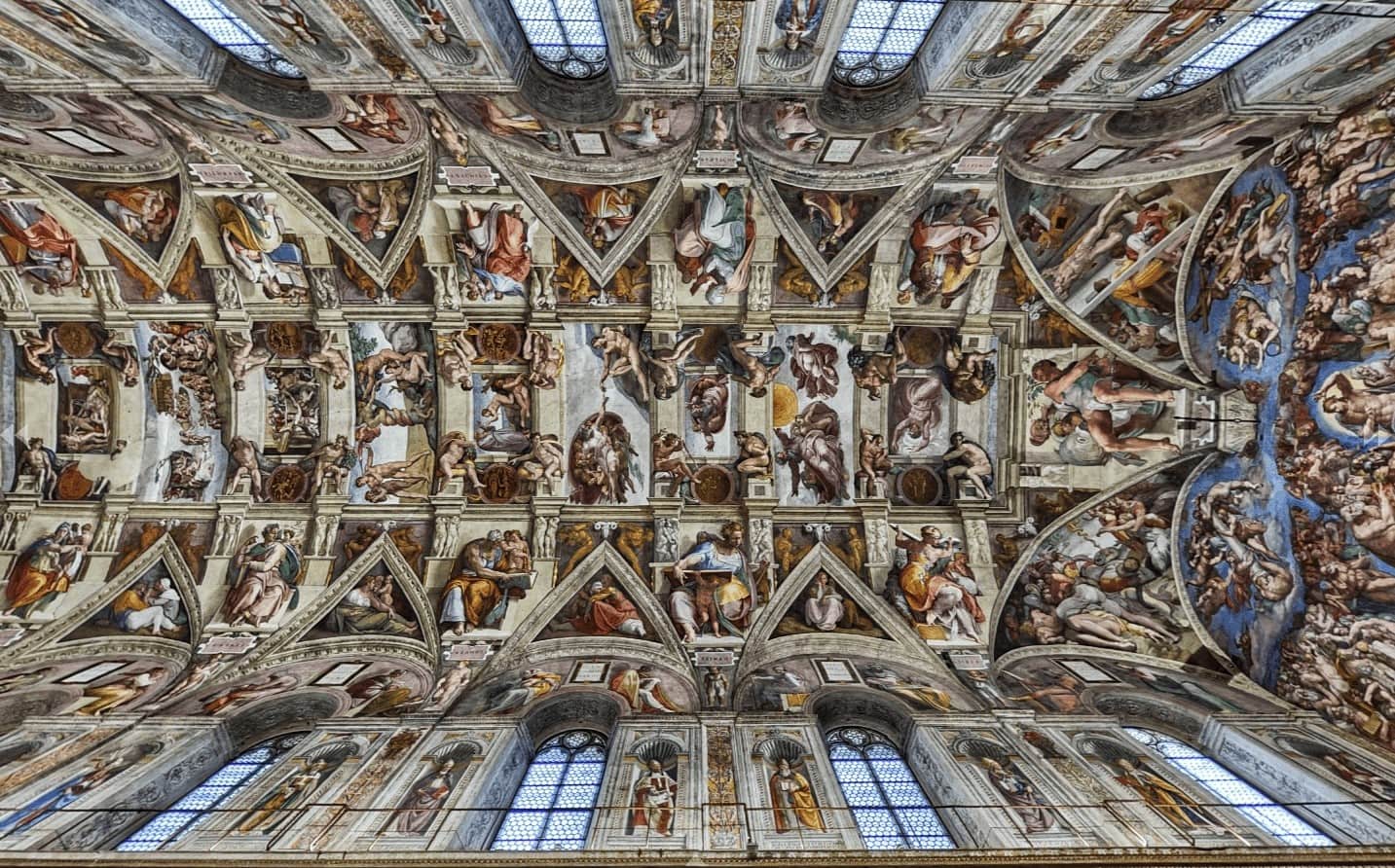
Did you know that the Sistine Chapel, located in Vatican City, is not just a place of worship but also a treasure trove of art and history? This iconic chapel, famous for its breathtaking ceiling painted by Michelangelo, attracts millions of visitors each year. But there's more to it than just the stunning frescoes. From its architectural design to the intricate details of its artwork, the Sistine Chapel holds many secrets and fascinating facts. Whether you're an art lover, history buff, or just curious, these 30 facts will give you a deeper appreciation for this masterpiece. Ready to be amazed? Let's dive in!
The Sistine Chapel: A Renaissance Marvel
The Sistine Chapel, located in Vatican City, is one of the most famous cultural and artistic landmarks in the world. Known for its stunning frescoes and architectural beauty, it attracts millions of visitors each year. Here are some fascinating facts about this iconic chapel.
Historical Background
Understanding the history of the Sistine Chapel provides context for its significance and grandeur.
- The chapel was built between 1473 and 1481. Pope Sixtus IV commissioned its construction, which is why it’s named after him.
- It was originally designed by architect Giovanni dei Dolci. His work laid the foundation for what would become a masterpiece of Renaissance art.
- The chapel serves as the site of the Papal Conclave. This is where new popes are elected, making it a place of immense religious importance.
Michelangelo's Masterpiece
Michelangelo's work on the Sistine Chapel ceiling is perhaps its most famous feature. His frescoes have captivated audiences for centuries.
- Michelangelo was initially reluctant to take on the project. He considered himself a sculptor, not a painter.
- The ceiling took four years to complete. Michelangelo worked from 1508 to 1512, often lying on his back on scaffolding.
- The ceiling features over 300 figures. These include iconic scenes like the Creation of Adam and the Last Judgment.
- Michelangelo used a technique called fresco. This involves applying paint to wet plaster, allowing the colors to become part of the wall.
- The Last Judgment was added later. Michelangelo painted this massive fresco on the altar wall between 1536 and 1541.
Artistic Techniques and Challenges
Creating the Sistine Chapel's artwork involved innovative techniques and overcoming significant challenges.
- Michelangelo faced physical strain. Working on the ceiling caused him severe neck and back pain.
- He had to develop new methods for painting on a curved surface. This required a deep understanding of perspective and anatomy.
- The frescoes have undergone several restorations. These efforts aim to preserve the vibrant colors and intricate details.
- Michelangelo included hidden messages in his work. Some scholars believe he incorporated anatomical references and personal reflections.
Architectural Features
The Sistine Chapel's architecture complements its artistic splendor, creating a harmonious space.
- The chapel's dimensions are based on the Temple of Solomon. It measures 40.9 meters long and 13.4 meters wide.
- It features a barrel-vaulted ceiling. This design choice enhances the acoustics and visual impact of the frescoes.
- The floor is made of colorful marble tiles. These intricate patterns add to the chapel's overall beauty.
- The walls are adorned with frescoes by other Renaissance artists. These include works by Botticelli, Ghirlandaio, and Perugino.
Cultural and Religious Significance
Beyond its artistic value, the Sistine Chapel holds deep cultural and religious meaning.
- It is a symbol of the Catholic Church's power and influence. The chapel's grandeur reflects the church's role in Renaissance society.
- The Sistine Chapel Choir performs here. This renowned choir adds to the chapel's spiritual atmosphere.
- It has inspired countless artists and writers. The chapel's beauty and significance have left a lasting impact on Western culture.
- The chapel is a UNESCO World Heritage site. This designation recognizes its importance to global heritage.
Fun and Lesser-Known Facts
There are many intriguing and lesser-known facts about the Sistine Chapel that add to its mystique.
- Michelangelo included a self-portrait in The Last Judgment. He depicted himself as the flayed skin of St. Bartholomew.
- The chapel has a strict dress code. Visitors must cover their shoulders and knees as a sign of respect.
- Photography is not allowed inside. This rule helps preserve the artwork and maintain a reverent atmosphere.
- The Sistine Chapel has been featured in numerous films and books. Its iconic status makes it a popular cultural reference.
- It attracts over 5 million visitors annually. This makes it one of the most visited sites in the world.
- The chapel's frescoes were almost destroyed by candle smoke. Before electric lighting, candles were used, causing significant damage.
- Michelangelo worked in secrecy. He kept the chapel closed to visitors during his work to maintain focus and privacy.
- The Sistine Chapel ceiling was cleaned in the 1980s and 1990s. This restoration revealed the original vibrant colors.
- The chapel's name in Italian is Cappella Sistina. This name honors Pope Sixtus IV, its patron.
- The Sistine Chapel is part of the Apostolic Palace. This is the official residence of the Pope in Vatican City.
Final Brushstrokes on the Sistine Chapel
The Sistine Chapel stands as a testament to human creativity and devotion. Michelangelo's masterpiece on the ceiling, with its intricate details and profound themes, continues to captivate millions. Beyond the art, the chapel's history, architectural design, and role in papal ceremonies add layers of significance. From the frescoes depicting biblical scenes to the Last Judgment on the altar wall, every inch tells a story. Visiting the chapel offers a unique glimpse into the Renaissance era's artistic and cultural achievements. Whether you're an art enthusiast or a history buff, the Sistine Chapel provides a rich, immersive experience. Remember, it's not just about the visuals; it's about understanding the context and appreciating the dedication behind every brushstroke. So next time you find yourself in Vatican City, make sure to take a moment to truly absorb the beauty and history of this iconic landmark.
Was this page helpful?
Our commitment to delivering trustworthy and engaging content is at the heart of what we do. Each fact on our site is contributed by real users like you, bringing a wealth of diverse insights and information. To ensure the highest standards of accuracy and reliability, our dedicated editors meticulously review each submission. This process guarantees that the facts we share are not only fascinating but also credible. Trust in our commitment to quality and authenticity as you explore and learn with us.


